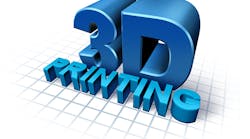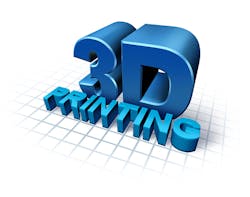As most entrepreneurs who have started fund raising activities, it becomes abundantly clear that you need a prototype of your product. Not to overstate the obvious, but in hardware and IoT, the physical product matters a lot, especially to investors. According to Eric Hsia, Venture Partner at TransLink Capital in Palo Alto, Calif., who is an expert hardware investor, “A physical prototype definitely helps, even if it's a pre-production prototype and not fully functional. Of course, all the boxes have to get ticked, from technology, to people, to market opportunity, but from a hardware device standpoint, the more you can make something come alive. A prototype really helps.”
Many early-stage startups start off with a 3D rendering of their product on a slide in the investor pitch deck—that’s a start. But as the fundraising process gets moving, you will need to move beyond slideware and pitch a real product.
Manufacturing-as-a-service, and 3D printing in particular, has revolutionized the building of a pre-production prototypes. Most startups do not have months and tens-of-thousands of dollars to invest in a prototype, and 3D printing service bureaus now make it possible to create a pitch-ready prototype you can slide across the table in the pitch meeting. But 3D printing is still a complex process. What most startups quickly discover is a high-quality prototype can’t be done on a desktop 3D printer. If you’re an entrepreneur who isn’t a designer or engineer, chances are you just don’t have the time to start learning 3D printing from scratch.
Based on my experience working with hundreds of companies and building millions of 3D printed parts, I offer the following seven tips to anyone going down the prototyping path for the first time. Here’s what to expect, problems to avoid, and how to build a great first prototype:
1. Have a plan. Start prototyping only after you’ve conducted competitive research, locked your requirement for your minimum viable product, tested your idea with customers, and finalized your design and engineering specifications. This sounds obvious but this will save you a lot time down the line.
2. Focus on quality. There is no point in doing a slapdash 3D print that will not have the level of detail and quality you want. Remember prospective investors, customers, distributors, partners and even employees you’re trying to recruit will judge you based on the quality of your prototype. First impressions count.
3. Get professional help. Desktop 3D printers are not up to the task of building professional, high quality prototypes. Find a high-end 3D printing service bureau and get to know their production capabilities, materials and finishing processes. Consider a global service bureau that allows you to work 24/7 with around the clock production options.
4. Put the right resources into 3D file creation. Despite an abundance of free and low-cost 3D modelling applications, it takes years to master these tools. Unless you’ve been doing 3D modelling for a while, chances are you’ll want to hire a professional. Once the file is ready for upload, high-end service bureaus offer online tools that check, analyze and repair files so they are optimized for printing and production.
5. Let function drive materials and 3D printing process. The size, shape and functionality of your product should drive the materials and 3D printing process you choose. Plastic is the most common material due to its low cost and range of finishing options for colors, surface textures and polishing. Selective Laser Sintering (SLS) is the industry standard for high-end 3D printing, but new processes such as Continuous Liquid Interface Production (CLIP), a photochemical process that makes it possible to produce parts with excellent mechanical properties, resolution, and surface finish, are now commercially available.
6. Be rigorous in the collection of test data and customer feedback. Use the input to rethink design and functionality. Incorporate the changes and test a new prototype based on the feedback. Communicate the results of testing and design changes to your team and your customers.
7. Prototyping is a process not a singular event. Use the process to experiment. If you plan for changes, iterations, and upgrades through the process you’ll be pleasantly surprised how much better your product will become. Every great product starts with a low-fidelity prototype whether it’s a drawing on a napkin or a 3D model created by an expert, planning for changes in the process allows you to make sure the final prototype you demo will be your best version.
Finally, as you begin pitching investors and doing demos of your product, you will see how a professional prototype can bring your vision and strategy to life in a way a 2D rending on a PowerPoint slides never could. It is exciting and gratifying to watch people handle your prototypes, pass them around the room, and examine them from every side. Closing the prototype gap will be a big credibility booster for you and your team.
Clement Moreau is co-founder and CEO of Sculpteo an online 3D printing and laser-cutting service based in San Francisco and Paris. He holds an MSc. in Engineering from Ecole Centrale de Paris.


